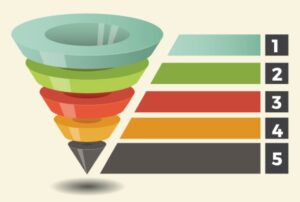5375.020 – Demographics and Sales Funnel
Demographics
Age groups and digital behaviors
Understanding the age groups of your online food consumers can significantly shape your marketing approach. By knowing which generation you’re targeting, you can tailor your messaging and choose the right digital platforms. For instance, if your primary audience is Millennials, you might focus on creating engaging content for Instagram or TikTok, and emphasize the convenience of your mobile app.
Income levels and spending habits
Recognizing the income levels of your target audience helps in crafting appropriate pricing strategies and promotions. This knowledge allows you to segment your offerings, ensuring you have options that appeal to different budget ranges. You might create value meals for price-sensitive customers while also offering premium options for those willing to splurge.
Geographic location: urban vs. suburban vs. rural
The location of your customers influences not just your menu offerings but also your marketing messages. In urban areas, you might highlight the speed of your delivery service. For suburban or rural areas, you could emphasize the variety you bring to their doorstep. This information also helps in planning targeted ads and deciding where to expand your services.
Education level
Knowing the education level of your audience can guide the tone and complexity of your marketing content. It influences how you present information about your food, whether you focus on simple, clear messages or dive into the details of ingredients and preparation methods. This understanding helps in creating content that resonates with your audience’s interests and knowledge base.
Occupation and work schedule
Understanding your customers’ work lives allows you to time your marketing efforts for maximum impact. You can schedule promotional pushes during peak ordering times for different professional groups. For instance, you might target office workers with lunch specials or cater to night shift workers with late-night promotions.
Family structure
Recognizing the family structure of your audience helps in developing appropriate meal options and marketing them effectively. You might create family meal deals for households with children, or focus on date night specials for couples. This information guides not just your menu planning but also the imagery and language you use in your marketing materials.
By deeply understanding these demographic factors, you can create more targeted, effective marketing campaigns. This knowledge allows you to speak directly to your audience’s needs and preferences, increasing the relevance of your messaging and, ultimately, the success of your online food service.
Sales Funnel
Understanding the customer journey is crucial for effective digital marketing in the food industry. This journey is often visualized as a Sales Funnel, which helps us map out how customers move from first becoming aware of your restaurant to making a purchase and, ideally, becoming a loyal customer.

At the top of the funnel, we have the first step of engagement, the awareness stage. This is where potential customers first learn about your restaurant. They might see an ad, stumble upon your social media, or hear about you from a friend. Your marketing goal here is to cast a wide net and make a strong first impression.
Moving down, we reach the Consideration stage. Here, customers are actively researching their options. They might be reading your menu, checking out photos of your food, or reading reviews. Your marketing should provide detailed, engaging information that sets you apart from competitors.
Next is the Conversion stage, the narrowest part of the funnel. This is where the customer decides to make a purchase. Your marketing efforts here should focus on making the ordering process as smooth as possible, perhaps offering a first-time customer discount or highlighting your most popular dishes.
But the journey doesn’t end with a purchase. The final stage is Loyalty, where one-time customers become regulars. This stage is crucial for long-term success. Your marketing should focus on follow-up emails, loyalty programs, and consistently great experiences to keep customers coming back.
By understanding this journey, you can create targeted marketing strategies for each stage of the funnel, guiding potential customers from initial awareness all the way to loyal patronage.
